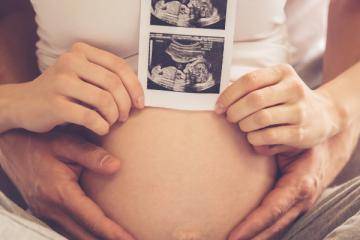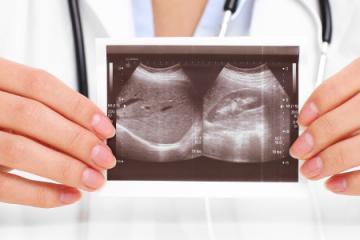




Mechanism of Rh immunization
Immunization to the D antigen requires exposure of an Rh-negative individual to Rh-positive RBCs. During pregnancy, an Rh-negative mother carrying an Rh-positive fetus may be exposed to the D antigen on fetal RBCs by fetal-maternal hemorrhage (FMH), in which fetal cells cross the placenta to enter the maternal circulation. Initial exposure to the incompatible RBCs carrying the D antigen produces a primary immune response in which low-avidity antibodies are generated, usually of the immune globulin M (IgM) class; IgM antibodies do not readily cross the placenta. Immunoglobulin G (IgG) anti-D antibodies develop slowly (weeks to a few months), and the level of antibodies in an immunized individual after primary immunization may be quite low or even undetectable by routine serological methods. Such an immunized person without detectable anti-D is referred to as a sensibilized. Once immunized (sensitized), subsequent exposure of the Rh-negative mother to even very small amounts of D-positive RBCs (< 1 mL) often results in a secondary (anamnestic) response. The secondary immune response is characterized by the rapid (days to 1-2 weeks) production of relatively large quantities of IgG anti-D. These IgG antibodies can cross the placental barrier and enter the fetal circulation, where they coat fetal RBCs and induce their destruction (hemolytic anemia). The anemia can be severe, and give rise to pathological consequences in many organ systems (see Clinical Manifestations), and in its most severe form, death of the fetus. This syndrome of anti-D-related anemia is called HDFN, or erythroblastosis fetalis.
The severity of HDFN increases progressively with each subsequent pregnancy FMH occurs most commonly during the third trimester or at delivery but may also occur during early gestation. FMH can also result from an abortion, ectopic pregnancy, amniocentesis, chorionic villus sampling, cordocentesis, or physical trauma (including external cephalic version). As a general rule, the likelihood of immunization depends on the volume of Rhpositive RBCs introduced into the maternal circulation, and the ABO status of the mother and baby. Fetal-maternal hemorrhage usually involves the transfer of < 0.1 mL of blood; however, if the exposure involves > 3 mL of blood, the risk of immunization can increase to as much as 50%. The D antigen is highly immunogenic. In contrast, ABO incompatibility between the mother and fetus affords partial protection against immunization to the D antigen. This is probably because anti-A and anti-B antibodies in the maternal circulation destroy fetal Rh-positive RBCs before they can stimulate immunization of the Rh-negative mother to the D antigen.


